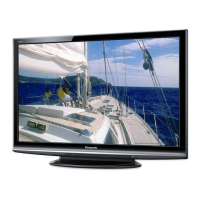
Do you have a question about the Panasonic VIERA TX-P42G10B and is the answer not in the manual?
| Screen Size | 42 inches |
|---|---|
| Display Type | Plasma |
| Resolution | 1920 x 1080 pixels |
| HDMI Ports | 3 |
| USB Ports | 1 |
| Contrast Ratio | 2, 000, 000:1 |
| Audio Output | 20 W |
| Response Time | 0.001 ms |
| Aspect Ratio | 16:9 |
| Refresh Rate | 600 Hz |
| Built-in Tuner | Yes |
| Sound Output | Stereo |
Receives freesat broadcasts in the UK with crystal clear reception.
Easy programme selection and timer programming using TV Guide.
Displays special feature icons for easy accessibility.
Supports high definition TV signals.
High-definition digital picture and sound via HDMI cable.
Decodes Dolby Digital Plus audio and outputs multi-channel sound.
Supports Gemstar-TV Guide sent from the GUIDE Plus+ system.
Anti-theft function using PIN and owner's personal information.
Supports high storage capacity SDHC cards (over 4 GB).
Plays moving pictures recorded in AVCHD format.
View photos or movies recorded on SD Card on TV.
Uses Q-Link and VIERA Link for easy recording and playback.
'Game' mode offers fast response for input signals.
Adds sound track to describe on-screen events for visually-impaired viewers.
Information on UK digital TV transition from 2007-2012.
High definition panel for original resolution pictures.
Realizes high picture quality and energy efficient panel.
Front panel enhances durability and protects against impacts.
Increases frame count for smoother motion images.
Wide contrast ratio delivers deep black and brighter white for depth.
Extremely fast response time to minimise picture lag.
Adjusts picture settings automatically based on ambient lighting.
Utilises advanced digital amplification technology for surround sound.
Plasma panels are lead-free, reducing environmental impact.
Plasma panel rated for up to 100,000 hours.
Indicates that a digital approved product tuner is built-in.
Enjoy free digital TV with up to 48 digital channels.
Ensure accessibility, proper earthing, and use provided leads.
Avoid removing rear cover as live parts are accessible.
Warning against irreversible damage from high headphone volume.
Avoid heat sources and flames to prevent fire.
Warning against TV falling or tipping over.
TV designed for 220-240 V, 50/60 Hz AC operation.
Avoid damage to internal circuitry during transport.
Handle by 2 or more people to avoid injury from tipping.
Keep SD Cards away from children to prevent swallowing.
Safety text regarding the moulded mains plug and fuse replacement.
Prevents 'image retention' by automatically lowering contrast.
TV automatically goes to standby if no signal/operation for 30 mins.
Avoid interference from video equipment and infrared sensors.
Instructions for cleaning the display panel safely.
Instructions for cleaning the cabinet and pedestal.
Instructions for cleaning the mains plug.
List of items included with the TV, like remote, batteries, leads.
Information on purchasing optional accessories like wall-hanging brackets.
Step-by-step guide for battery installation in the remote control.
Do not disassemble or modify the pedestal to prevent injury.
Use correct TV/displays, ensure screws are tight, and TV does not fall.
Instructions for attaching poles to the base using screws.
Instructions for fastening the TV to the pedestal securely.
How to swivel the TV panel for optimal viewing.
Instructions for attaching and using cable management clampers.
Identifies the main connection terminals and indicators on the TV.
Explains the function of each button on the remote control.
Diagrams and instructions for connecting satellite dish or terrestrial aerial.
Diagrams showing how to connect DVD recorders/VCRs.
Diagrams for connecting recorders and cable TV boxes.
Initial power-on and automatic setup start.
Inputting postcode for local channel services.
Setting owner ID and PIN for security.
Choosing the viewing environment (Home or Shop).
Guide to navigating menus and options using the remote.
Detailed steps for entering postcode using on-screen keyboard.
Detailed steps for entering Owner ID and PIN.
Explanation of shop display mode and its settings.
Shows how to access VIERA TOOLS features.
How to navigate and select available VIERA TOOLS features.
How to use specific VIERA TOOLS functions like Link Control, Pause Live TV.
Simple instruction to turn the TV on.
How to switch between different TV reception modes.
Instructions for selecting channels using number buttons or TV Guide.
Using the information banner to select channels.
Using the TV Guide (EPG) to select channels.
Explains the content and meaning of the information banner.
Explains icons like Mute, AD, Subtitles, TXT, Multi Audio.
How to display or hide subtitles.
How the TV automatically adjusts aspect ratio or how to change it manually.
Checking/changing Multi Audio, Subtitle Language, NICAM, Volume Correction.
How to set the TV to turn off automatically after a fixed period.
Step to select freesat mode for TV Guide.
How to filter TV Guide by genre.
Viewing TV Guide in Portrait or Landscape layout.
Selecting DVB or Analogue mode for TV Guide.
Instructions for viewing TV Guide in DVB or Analogue mode.
How to display and update advertisement information.
Selecting and viewing current programmes via TV Guide.
Setting timer for recording programmes.
Timer recording via TV Guide signal.
Explanation of digital teletext services and how to use them.
Selecting freesat or DVB mode for teletext.
How to access the teletext service.
Guide to navigating teletext pages using remote control.
Information on analogue teletext services.
Explains the FASTEXT mode for quick access to subjects.
Explains the List mode for storing frequently viewed pages.
Selecting Analogue or Other Sat. mode for teletext.
Accessing teletext service.
Navigating teletext pages using page numbers.
How to reveal hidden quiz answers.
Controls for displaying teletext in different sections.
How to hold the current teletext page without updating.
How to store and view favourite subtitle pages.
Watching TV and Teletext simultaneously in two windows.
Storing frequently viewed teletext pages in the colour bar.
Viewing teletext sub pages.
Watching TV while teletext page downloads.
Instructions for turning TV on when connecting external equipment.
How to access the menu to select input source.
Choosing the correct input mode for connected devices.
Displays the selected input mode.
How to select DVD/VCR or TV mode for remote operation.
Changing remote control codes for different equipment types.
How to access the main menu.
Choosing from Picture, Sound, or Setup menus.
Navigating within a selected menu to find specific settings.
Making adjustments or selections for menu items.
Selecting options from a list or using slide bars.
Navigating to subsequent screens or options.
Entering text or names for menu items.
Settings for Picture Menu items like Viewing Mode, Contrast, Colour.
Settings for Sound Menu items like Mode, Bass, Treble, Audio Description.
Settings related to connecting and configuring a PC.
Settings for VIERA Link and Q-Link functions.
Setting up child lock to restrict access to channels or inputs.
Managing freesat channels.
Managing DVB channels.
Managing analogue channels.
Managing other satellite channels.
Settings for display options like Teletext, Input Labels.
System settings like Shipping Condition, Owner ID.
Miscellaneous settings.
Settings for network connection and IP configuration.
List of channels and AV inputs locked by Child Lock.
Creating and editing favourite freesat channel lists.
Automatic tuning for freesat channels.
Checking signal strength and quality for freesat reception.
Automatic tuning for DVB channels.
Checking signal strength and quality for DVB reception.
Creating and editing favourite DVB channel lists.
Manually tuning DVB channels.
List of analogue channels and options to edit them.
Automatic tuning for analogue channels.
Creating and editing favourite channels for other satellites.
List of channels for other satellites and options to edit them.
Manually tuning channels for other satellites.
Selecting satellites for auto setup.
Setting search mode for finding channels.
Adding new satellite channels to the list.
Selecting screen settings for different viewing environments.
Adjusting basic picture quality settings.
Adjusting picture hue for NTSC signals.
Setting the overall colour tone of the picture.
Automatically adjusting colours to be more vivid.
Adjusting picture settings for ambient lighting.
Reducing picture noise and flicker.
Enhancing sharpness and colour for moving pictures.
Resetting picture settings to default values.
Selecting sound settings like Music or Speech.
Adjusting audio levels for bass, treble, and speaker balance.
Adjusting the volume for headphones.
Enabling surround sound effects.
Adjusting volume for individual channels or inputs.
Optimizing sound based on TV placement.
Selecting preferred language for digital multi-audio.
Enabling stereo sound reproduction for analogue broadcasts.
Setting digital or analogue input for HDMI terminals.
Settings for audio description service.
Adjusting volume for audio description.
Activating description sound from TV speakers.
Activating description sound from headphones.
Resetting sound settings to default values.
Recording programmes at scheduled times.
Setting the TV to turn off automatically.
Enabling VIERA Link functions for connected equipment.
Enabling Q-Link for data communication with recorders.
Selecting AV terminals for data communication.
Reducing power consumption of connected equipment in standby.
Automatically putting unused equipment into standby.
Downloading analogue channel info to Q-Link compatible equipment.
Setting up network connection.
Locking channels or AV inputs.
Managing freesat channels.
Managing DVB channels.
Managing analogue channels.
Managing other satellite channels.
Settings for display options like Teletext, Input Labels.
System settings like Shipping Condition, Owner ID.
Miscellaneous settings.
Teletext, Preferred Subtitles, Side Panel, Input Labels, Banner Timeout settings.
Shipping Condition, Owner ID, Common Interface, System Update, Software Licence, System Information.
Postcode setting for GUIDE Plus+ system.
Automatically compensating picture frame rate.
Selecting input source on power on.
Selecting channel list on power on.
Reducing picture brightness to save power.
Selecting screen area to hide image edges.
Controlling the SD card LED indicator.
Automatically retuning all freesat channels.
Step to select freesat mode for tuning.
Accessing the main menu.
Navigating to the Setup menu.
Accessing the freesat tuning options.
Initiating the automatic setup process for freesat.
Starting the automatic tuning procedure.
Inputting postcode for local services.
Automatically retuning DVB or Analogue channels.
Selecting DVB or Analogue mode for tuning.
Navigating to the Setup menu.
Accessing DVB or Analogue tuning options.
Initiating the automatic setup process for DVB/Analogue.
Starting the automatic tuning procedure for DVB/Analogue.
Selecting freesat mode for channel management.
Accessing the Setup menu.
Accessing freesat channel tuning options.
Choosing from Favourites Edit, Channel List, Auto Setup, Signal Condition.
Selecting channels to add to the favourites list.
Adding selected channels to the favourites list.
Editing or deleting channels from the favourites list.
Hiding or skipping unwanted channels.
Checking signal strength and quality for freesat.
Selecting DVB mode for channel management.
Accessing the Setup menu.
Accessing DVB channel tuning options.
Choosing from Favourites Edit, Channel List, Auto Setup, Manual Tuning, Update Channel List, New Channel Message, Signal Condition.
Automatically updating the DVB channel list.
Setting notifications for new DVB channels.
Checking signal strength and quality for DVB.
Selecting DVB channels to add to favourite lists.
Adding selected DVB channels to favourites.
Editing or deleting favourite DVB channels.
Hiding or editing unwanted DVB channels.
Manually tuning DVB channels.
Selecting Analogue mode for channel management.
Accessing the Setup menu.
Accessing Analogue channel tuning options.
Choosing from Channel List, Auto Setup, Manual Tuning.
Hiding or revealing unwanted Analogue channels.
Editing Analogue channels in the list.
Manually tuning Analogue channels.
Selecting freesat or other satellite modes for tuning.
Accessing the Setup menu.
Accessing tuning options for other satellites.
Choosing from Favourites Edit, Channel List, Auto Setup, Manual Tuning, Add New Channels, Signal Condition.
Manually tuning channels for other satellites.
Checking signal strength and quality for other satellites.
Choosing the satellite for auto setup.
Verifying signal lock status before setup.
Configuring search mode and starting auto setup.
Verifying signal condition before adding channels.
Configuring search mode and starting to add channels.
Selecting channels to add to favourite lists for other satellites.
Adding selected channels to favourites.
Editing or deleting favourite channels.
Hiding or editing unwanted channels for other satellites.
Locking specific channels or AV inputs.
Entering the PIN for child lock access.
Accessing the list of locked channels/inputs.
Choosing channels/inputs to lock.
Changing the existing PIN number.
Settings for network connectivity.
Accessing the main setup menu.
Accessing VIERA Link and Q-Link settings.
Accessing network setup options.
Configuring IP address, DNS, Proxy, and Speed Mode.
Automatically acquiring IP address.
Automatically acquiring DNS address.
Setting up proxy address and port.
Setting the LAN speed.
Performing a network connection test.
Accessing display configuration options.
Labeling or skipping input terminals.
Assigning labels to input terminals.
Naming input modes freely.
Resetting TV to original factory settings.
Steps to complete factory reset and initial setup.
Downloading and installing TV software updates.
Configuring automatic software update search.
Manually searching for and downloading updates.
Entering the PIN for owner ID.
Inputting personal information for owner ID.
Viewing stored owner ID information.
Changing the existing PIN number.
Inserting the Common Interface module for Pay-TV.
Accessing the Common Interface menu.
Operating the CI module via on-screen guide.
Setting timer programming via the menu.
Choosing the TV mode for recording setup.
Accessing the main menu.
Navigating to the Setup menu.
Accessing the timer programming function.
Beginning the timer programming setup process.
Selecting the channel for timer programming.
Setting the date for timer programming.
Setting the end time for timer programming.
Saving the programmed timer event.
Modifying an existing timer programming event.
Deleting a timer programming event.
Temporarily cancelling a timer event.
Viewing details of programmed timer events.
Timer recording via TV Guide signal.
Recording directly to DVD Recorder/VCR.
Instructions for inserting an SD card.
Choosing Photo View mode for SD card content.
Browsing folders and selecting files for thumbnail display.
Selecting a file from thumbnails to view.
Beginning the slideshow operation.
Adjusting slideshow effects, interval, and repeat options.
Displaying thumbnails of all photos on the SD card.
Sorting photos by date or month.
Selecting Movie View mode for SD card content.
Choosing movie files to play from SD card.
Configuring audio output settings, like SPDIF Selection.
Selecting the PC input source.
Choosing the PC input mode from the selection menu.
Adjusting PC-related settings like resolution, clock, position.
Features and connection for Q-Link.
Features and connection for VIERA Link via HDMI.
Features and connection for VIERA Link via HDMI and SCART.
Details of VIERA Link features for various equipment.
Diagrams for connecting Player theatre/Blu-ray Disc theatre and Amplifier.
Preparations, features, and direct TV recording with Q-Link.
Recording current programme immediately using Q-Link.
How power on link and easy playback functions work.
How power off link function works.
Connecting and setting up VIERA Link compatible equipment.
Details on Analogue channel download, Easy playback, Power on/off links.
Using Standby Power Save feature.
Using Intelligent Auto Standby feature.
Recording current programme via VIERA Link Menu.
Pausing and resuming live TV broadcasts.
Steps to operate the Pause Live TV function.
Returning to live TV after pausing or cancelling.
Using TV remote to control connected equipment menus.
How to access and operate equipment menus.
Choosing the equipment from the list to control.
Using TV remote buttons to operate equipment menus.
Controlling speaker volume via TV remote.
Selecting speaker output mode.
Connecting equipment to an amplifier for multi-channel audio.
Connecting to network via Hub or Router.
Instructions for installing ferrite cores on cables.
Connecting a DVD player.
Table showing equipment compatibility with TV terminals.
Connecting a cable TV box.
Connecting HDMI compatible equipment.
Connecting DVD Recorder/VCR.
Connecting headphones and adjusting volume.
Connecting camcorders or game equipment.
How the TV automatically selects aspect ratio or how to change it manually.
How WSS or SCART/HDMI signals affect aspect ratio.
How auto mode determines best aspect ratio.
Important precautions for handling SD cards.
Supported data formats for photos and movies.
Table for entering characters using numeric buttons.
Information on connecting HDMI devices and applicable features.
Connecting a PC to the TV and its settings.
Supported resolutions for PC input.
Pinout details for PC connection.
How to download software via notification banner.
Setting up automatic software downloads.
Information on network connection requirements.
Pinout details for SCART and HDMI terminals.
Table of supported input signals for COMPONENT and HDMI.
Supported PC input signals via D-sub 15-pin.
Supported PC input signals via HDMI.
Troubleshooting tips for image noise.
Troubleshooting steps when no image or sound is displayed.
Information on auto aspect ratio adjustment.
Troubleshooting tips for S-Video picture issues.
Troubleshooting steps when TV Guide shows no programmes.
Solutions for failed freesat auto setup.
How to clear screen information.
Troubleshooting Q-Link connectivity issues.
Troubleshooting VIERA Link errors.
Troubleshooting delayed recording starts.
Reasons for reduced contrast.
Troubleshooting chaotic or noisy images.
Troubleshooting steps for a blank screen.
Troubleshooting blurry images or low volume.
Troubleshooting unexpected image display.
Troubleshooting steps for no sound.
Troubleshooting low or distorted sound.
Explanation for whirring sound from cooling fan.
Troubleshooting signal interference.
Troubleshooting tuning issues.
Troubleshooting for missing channels.
Limitations in freesat mode for Audio Description settings.
Troubleshooting missing English sound on freesat channels.
Troubleshooting unusual audio output.
Troubleshooting HDMI connection picture issues.
Troubleshooting power-on issues.
Explaining automatic standby mode activation.
Troubleshooting remote control issues.
Explanation of permanent spots on screen.
Following instructions for error messages.
Meaning of message regarding data erasure.
Confirmation prompts for operations.
Confirmation for deleting timer events.
Indication of weak signal and troubleshooting.
Message when Child Lock is active.
Message indicating no network connection.
Message related to dish or cable issues.
Message indicating a feature is unavailable.
Notification for available software updates.
Network gateway connection error.
Error message for incorrect operation or connections.
Message indicating incorrect system time.
Message indicating duplicate IP addresses.
Message indicating IP address is not set.
Message for incorrect manual IP settings.
Message indicating timer limit reached.
Notification of new channels found.
Message for no channels found.
Message indicating no CI module is inserted.
Message related to recording media issues.
Message indicating the equipment is already recording.
Message for unexplained recording issues.
Message indicating no service available on channel.
Message indicating no signal detected.
Message indicating an incorrect PIN entry.
Troubleshooting HDMI connection errors.
Guidance for satellite frequency selection.
Message indicating an ongoing operation.
Message indicating current channel recording.
Confirmation of factory reset completion.
Message during data transmission.
Confirmation of successful software update.
Message for failed software update.
Warning about timer programming not following TV Guide.
Message indicating a timer event has already passed.
Notification of an upcoming programmed recording.
Message indicating incorrect timer settings.
Message regarding overlapping timer events.
Message indicating the tuner is locked.
Message indicating IP address acquisition failure.
Message regarding download issues.
Message indicating a file cannot be read from SD card.
Message indicating no SD card is present.
Message indicating no playable file on SD card.
Message indicating maximum picture limit reached.
Message indicating a potential SD card issue.
Message indicating an operation cannot be performed.
Digital Video Broadcasting.
Digital Versatile Disc.
Digital Visual Interface.
Electronic Programme Guide.
High-Definition Multimedia Interface.
Media Access Control Address.
National Television System Committee.
Radio Frequency signal.
Video formats.
21-pin connection for video, audio, and switching signals.
Demonstration mode for explaining TV features.
Video Cassette Recorder.
Listing of registered trademarks and logos.
Electrical specifications for power input.
Details on power usage in operation and standby.
Panel type, aspect ratio, screen size, and pixel count.
Speaker specifications and audio output details.
Supported PC signal types.
Supported TV broadcast systems.
Specifications for satellite dish connection.
Specifications for aerial connection.
Environmental conditions for operation.
Pinout and specifications for various TV terminals.
Physical dimensions of the TV.
Weight of the TV with and without pedestal.
Explanation of symbols related to waste disposal.
Disposal information for business users.
Contact details for customer support.
Information on ordering accessories and extended guarantees.
Information on AVC patent license and compliance.
Space for recording model and serial numbers.

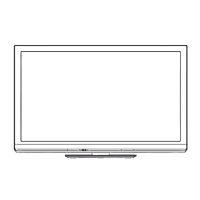

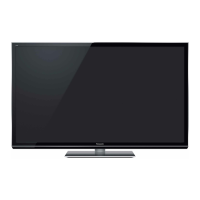
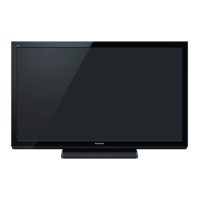

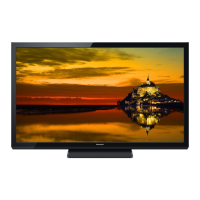
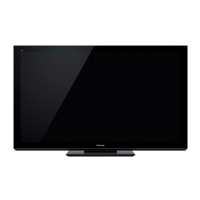

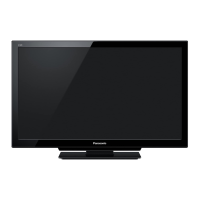
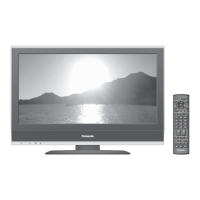
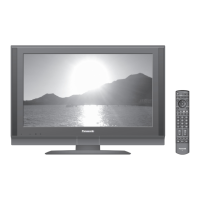
